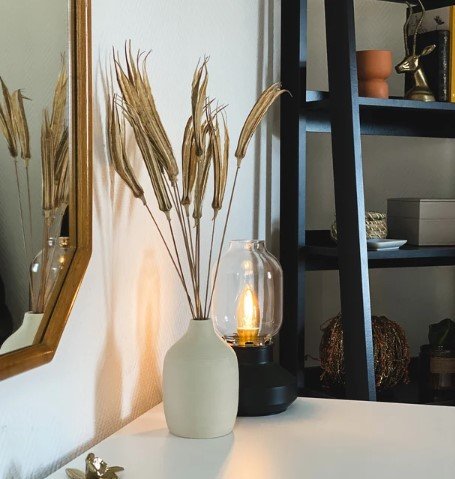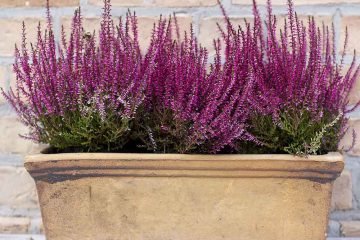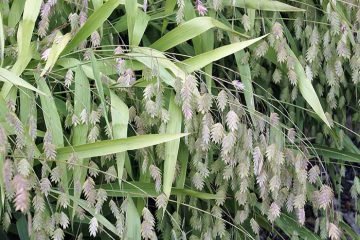Okra plant
Okra plant specifications
- Scientific name : Hibiscus esculentus L.
- French name : Bani, Katmic comestible
- English name : Edible hibiscus – okra
- German name : Bamia
- Italian name : Bannia d’Egit to
- Family : Malvaceae
- Genus : Abelmoschus
- Native : South Asia and West Africa
- This plant is grown in tropical, subtropical and temperate regions around the world.
Okra plant is grown for its edible seed pods. It is also used as an annual landscape plant for its attractive flowers. The okra plant, which is a perennial plant in the dry tropical regions where it is native, has an upright, branching growth habit. Okra gets big; the adult plant can reach 6 to 8 feet in height.
The flowers are yellow or white, often with purplish centers. What is harvested as the okra fruit are the elongated seed pods that appear after the flowers bloom. The seed pods are up to 7 inches long, containing white seeds that fill a pentagon-shaped chambered structure.
read more : Everything about iris flower : How to Plant & care for them

How to Plant Okra
Getting okra started in your garden isn’t difficult if you follow these basic steps for the proper way to plant okra.
When to Plant
Okra is planted in the spring. There is no one-fits-all answer to the question of what’s the best month to plant okra, as the planting time depends on the weather. Okra is planted when the soil temperature reaches 65 to 70 degrees Fahrenheit. Ideally, the seeds are planted directly in the soil but in regions with short growing seasons, the seeds can also be started indoors in biodegradable pots three to four weeks before the last projected frost date.
Before planting okra outdoors, wait until the weather is reliably warm, about two weeks after your last projected frost date. Okra prefers evening temperatures around 65 degrees Fahrenheit and daytime temperatures in the upper 80s.
Gardeners in warm climates can plant a second crop for harvest into the fall.
Selecting a Planting Site
Okra needs a location with full sunlight or at least 6 to 8 hours per day, and soil that is fertile and moist but well-drained.
Spacing , Depth and Support
Here’s how to plant okra step by step :
- Plant the seeds 1 inch deep. You can either make a furrow with a trowel or make holes in the soil.
- Don’t put more than 1 seed per hole because that will lead to crowding and thin plants with few fruits. And if both seeds germinate, you risk injuring both when removing the extra one. Instead, place a seed every 4 to 8 inches. Space rows 3 feet apart.
- When the seedlings are 4 to 6 inches tall, thin them out so that the seedlings are 18 to 24 inches apart to give the plants room to branch.
- Do not pull the extra seedlings out of the soil but cut them at ground level with scissors.
read more : Everything about nigella plant : How to Plant & care for them
Types of Okra
For ease of harvest, select a spineless okra variety but be aware that even varieties labeled as spineless are not completely spine-free. Popular varieties include :
- ‘ Annie Oakley ‘ is a hybrid plant that provides a nice yield. It grows 3 to 4 feet tall.
- ‘ Burgundy ‘ is an heirloom variety that has deep reddish seed pods that lose some of the color with cooking. It grows to around 4 feet.
- ‘ Clemson Spineless ‘ is an heirloom plant known for its good flavor. It is a larger variety, growing 4 to 5 feet high.
- ‘ Emerald ‘ has especially long seed pods at 7 to 9 inches. It is a spineless heirloom plant that grows to around 4 feet.
- ‘ White Velvet ‘ is another heirloom plant. It has tender white pods and grows to 5 feet.
Dried okra pods
Okra plant is one of the export goods of Iran and has provided a great opportunity for Iranian traders to bring a lot of currency to the country by export okra plant . Both types of okra products can be exported either as food or as decorative plants because each has its own customer. The export of dried okra pods has provided a great opportunity for wholesalers and exporters of dried okra pods and other medicinal plants to make significant profits.
One of the most important medicinal plants is okra, which is grown in Iran as a car and can even be cultivated. This plant species has been the basis for the production of various medicines in the world, which is used in combination with other medicinal compounds.
read more : Drying natural flowers | Introducing 8 wonderful ways to dry flowers

Okra Care
Okra does not require much care and it is easy to grow.
-
Light
You’ll have the strongest plants and the most pods if you plant your okra in full sun. This means at least six hours of direct sunlight on most days.
-
Soil
Okra does best in rich, well-draining soils with a slightly acidic soil pH between 6.0 and 6.8. The plant won’t do well in heavy, soggy soil.
-
Water
Once okra plants are established, they can handle brief dry spells. For best yields, water well weekly if you haven’t had rainfall. Keep the soil of young plants evenly moist but not soggy. Okra needs about an inch of water per week for best productivity.
-
Temperature and Humidity
Okra is a very important food in hot climates where many other crops falter. In cooler climates, the seed pods are often smaller but still very edible. Okra plants love the heat. They kick into gear when temperatures reach 80 degrees Fahrenheit and grow even stronger when temperatures climb above 90 degrees Fahrenheit. They also excel in dry conditions but still grow perfectly well in humid climates.
-
Fertilizer
If you plant okra in organically rich soil, you won’t need supplemental fertilizer, nor worry about a fertilizer schedule ( unless you want the plants to produce a second crop, see under Pruning below ). Side dressing with composted manure or foliage feeding with a seaweed / fish fertilizer will supply some extra fuel.
Pollination
Okra plants are self-pollinating; you can harvest pods with only one plant. Okra does not require pollinating insects to produce fruit.
read more : Everything about chamomile : How to Plant & care for them
Harvesting Okra
The edible okra fruits — the seed pods—generally appear about 50 to 60 days after the seedlings sprout, immediately after the flowers bloom. Okra pods are best when picked young. They are most tender when they’re 2 to 4 inches long and as wide as a pinkie finger. They tend to grow in the blink of an eye and usually reach this size within six days of flowering.
As okra pods get larger, they become stringy and tough. Harvest pods early and often for best eating, as well as to keep the plant producing more flowers and pods. The plants will keep producing pods throughout the summer, though in lessening quantities. Harvest pods continuously to keep the plants producing.
Okra plants are not pleasant to touch. Whether the spines are pronounced or hair-like, they are scratchy and irritating. Wearing gloves and long sleeves helps. It’s also easier to harvest with a pruner rather than pulling with your finger and getting the spines in your skin.
As with most vegetables, okra is at its peak when freshly picked. Pods can be stored in the refrigerator for about one week, or they can be frozen, canned, or pickled.
How to Grow Okra in Pots
Okra plants need a large container that’s roughly a foot deep with a similar diameter. A dark-colored container is beneficial because it will absorb heat, which okra plants like. Make sure the container also has good drainage, and always empty the saucer right away if it fills with water. Use a quality organic potting mix, and keep the soil lightly moist but not soggy. Selecting a smaller okra variety for container growth is recommended.
read more : Everything about dandelion flower : How to Plant & care for them
Pruning
In mild climates with long summers, pruning okra can be a way to make the plant produce more. As summer progresses, there will be fewer pods to harvest. When the fruit production has noticeably dwindled, cut the plants back to a height of 6 to 12 inches above the ground using pruning shears.
Fertilize the plant with a fertilizer that is high in nitrogen and potassium and has a 1:2 ratio of nitrogen to potassium. Water it in and continue to irrigate the plant if there is insufficient rain. In the early fall, the plant will produce a second crop.
Propagating Okra
If you are growing an heirloom variety of okra, you can leave the pods on the plants to mature and dry and then harvest the seeds for next year. Store the seeds in a cool, dry spot over the winter, and plant them the following spring.
How to Grow Okra From Seed
Okra can be direct sown or started indoors and transplanted. The seeds are large and easy to handle. Follow the instructions for how to plant okra above.
Some gardeners like to soak the seeds in water the night before planting to soften the tough seed coating, but you should get good germination if you simply keep the soil moist until the seedlings emerge. It is recommended, though, that you start seedlings in biodegradable pots that can be planted in the ground to lessen root disturbance and transplant shock.
read more : Everything about yarrow flower : How to Plant & care for them
Common Pests & Diseases
Okra is relatively problem-free, and most issues affect only the leaves, not the pods. Aphids, Japanese beetles, corn earworms, flea beetles, and stink bugs are known to attack the plants. Keep an eye out, and spray them off with water or remove them by hand before the infestation grows. Planting okra in cold soil can lead to diseases like verticillium wilt or fusarium wilt.
Notice : This article translated by google form Persian language. If you have any question or need more information please contact us or add a comment at the bottom of this page.



0 Comments